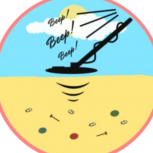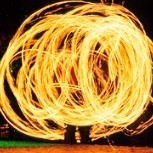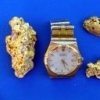-
Posts
577 -
Joined
-
Last visited
-
Days Won
5
Geotech last won the day on November 9 2023
Geotech had the most liked content!
Profile Information
-
Gender
Not Telling
-
Location:
Republic, WA
-
Interests:
Designing metal detectors
Contact Methods
-
Website URL
https://geotech1.com
Recent Profile Visitors
8,236 profile views
Geotech's Achievements

Gold Contributor (5/6)
2.5k
Reputation
-

First Texas Marketing
Geotech replied to phrunt's topic in First Texas - Bounty Hunter, Fisher & Teknetics
Is that a Garrett in the first pic? -

Legend Internals, Circuit Board, Processor, Etc.
Geotech replied to phrunt's topic in Nokta / Makro Legend Forum
It's a custom made display, you can only get it from Nokta. -
It's the same issue as described here. A shallow iron target will double-beep even with a brisk sweep but with deep iron the two beeps blend together (due to the geometry of depth vs coil size) unless you slow down the sweep rate. Deep non-ferrous can start to look ferrous because the ground response (with is almost purely positive-reactive) overwhelms the now-tiny negative-reactive portion of the non-ferrous, so that the target's reactive signal ends up looking ferrous. This is more likely to happen with low conductors than with Big Silver Coins. It also depends on the quality of the ground filters. Less likely to happen with the old 4-filter designs, which no one makes any more (AFAIK). Shallow non-ferrous can double-beep because as you get really close to the RX coil the edge of the coil becomes more sensitive than the center. Gold prospectors use this to "edge-detect" really small nuggets with PI mono loops.
-
I need to make some pattern measurements on a Cleansweep coil for my book. If anyone has one (either 4pin or 5pin, doesn't matter) and willing to loan it, I'll pay shipping both ways. I have a Cleansweep which has been sitting in a box for 10 years, I pulled it out and the null has shifted so badly it is unusable.
-
It's single frequency in that it only transmits a single frequency square wave. But that square wave has odd-order harmonics and the 3rd harmonic can be demodulated as a pseudo-second frequency and used for salt cancellation. Because the 3rd harmonic is much weaker, it does not make an effective second frequency for the purpose of detecting targets. That is, if you transmit a 5kHz square wave, the 15kHz 3rd harmonic is useful for salt cancellation but otherwise the detector performs mostly like a 5kHz single frequency. If this sounds familiar, it's exactly how the Fisher CZs did it back in 1991.
-
SMF is either 23 or 33 years old, depending on your definition of SMF. And I would not be so sure it's peaked.
-
That confirms what I've heard: high-end multifrequency with color display. From what I know they started work on this 12-13 years ago. It'll be interesting to see if they borrowed anything from the V3.
-
Apparently Republic is the gold capital of Washington State. 8 million ounces and still going. But few places for prospecting, it's all deep hard rock stuff. Almost ended up in White Salmon, gorgeous area.
-
Where abouts in Washington?
-
I posted a reply to Woody's video. The ferrites shield the solder connections so they don't light up with sudden changes in ground mineralization. Woody mentions this late in the video but doesn't seem to think that's what they're for.
-

Do Digital Detectors Lose Depth Over Time?
Geotech replied to Digalicious's topic in Metal Detector Advice & Comparisons
The core purposes of VFlex were (1) to transmit coil parametrics (like "this is a 10" DD coil optimized for 18kHz") to the control box and (2) to use a security check to limit 3d party coils. Whether or not #2 was an afterthought I don't know, but I suspect it was planned and deliberate, as it was for printer cartridges. A great way to limit competition. Otherwise, a simple resistor in the coil could be used to ID the coil type. The inclusion of a preamp in the coil might be considered part of VFlex, but in reality it has nothing to do with the micro that is the at core of VFlex. That is, you can do VFlex without the preamp in the coil, and you can put a preamp in the coil without the micro. But if there is no micro in the coil, then there is no VFlex. I don't recall that the original Go-Finds used VFlex, but the newer models apparently do. -
LMAO, I like that the coil appears to have a metallic housing. I would design it with vibranium, besides being durable it does not support eddy currents so is not detected.
-

Do Digital Detectors Lose Depth Over Time?
Geotech replied to Digalicious's topic in Metal Detector Advice & Comparisons
Placing the preamp in the coil improves noise immunity because the RX signal from the coil to the control box is now driven by a low impedance and has also been gained up. Minelab started this with the original X-Terras (30/50/70) and I assume all their detectors are now designed this way. I'm not sure if Garrett or Nokta do this, and XP obviously does.












